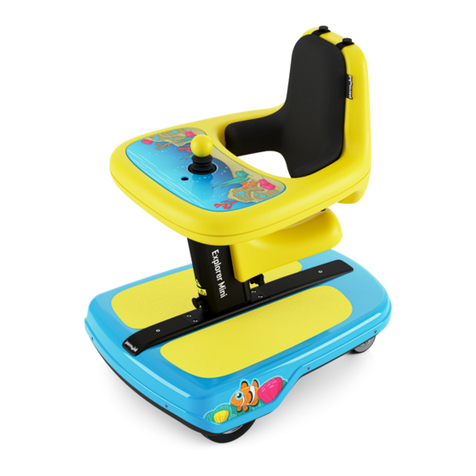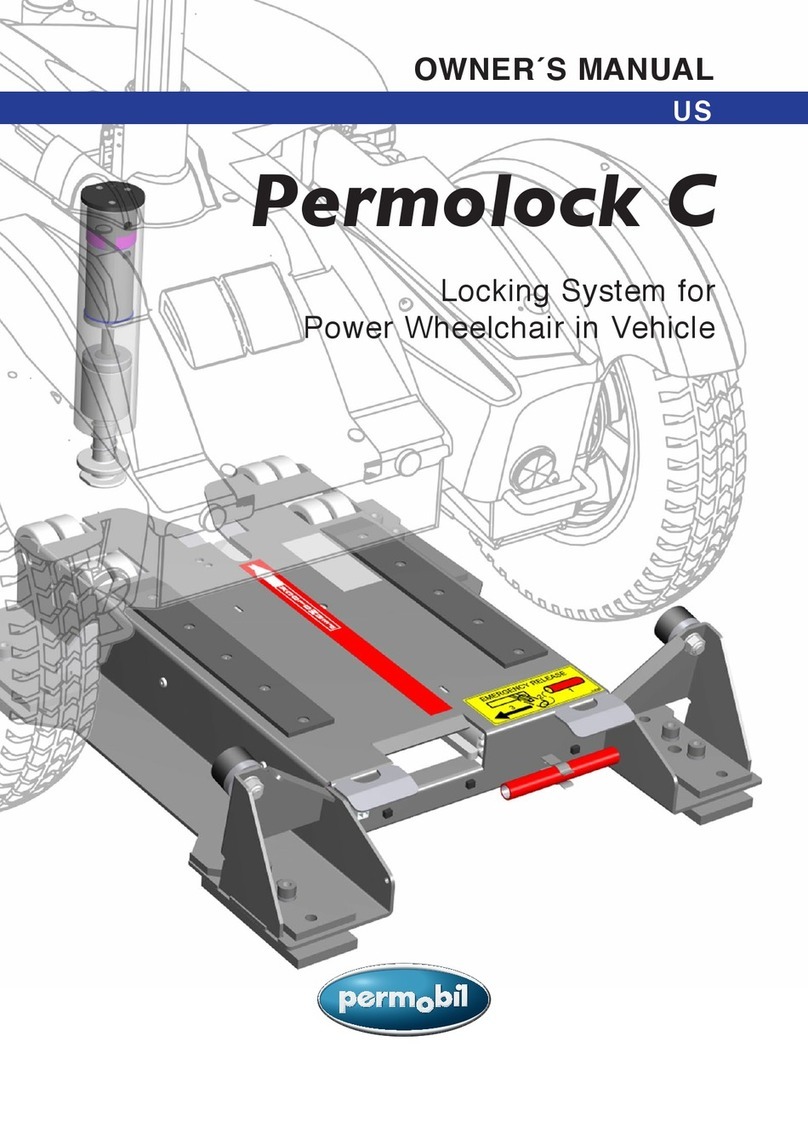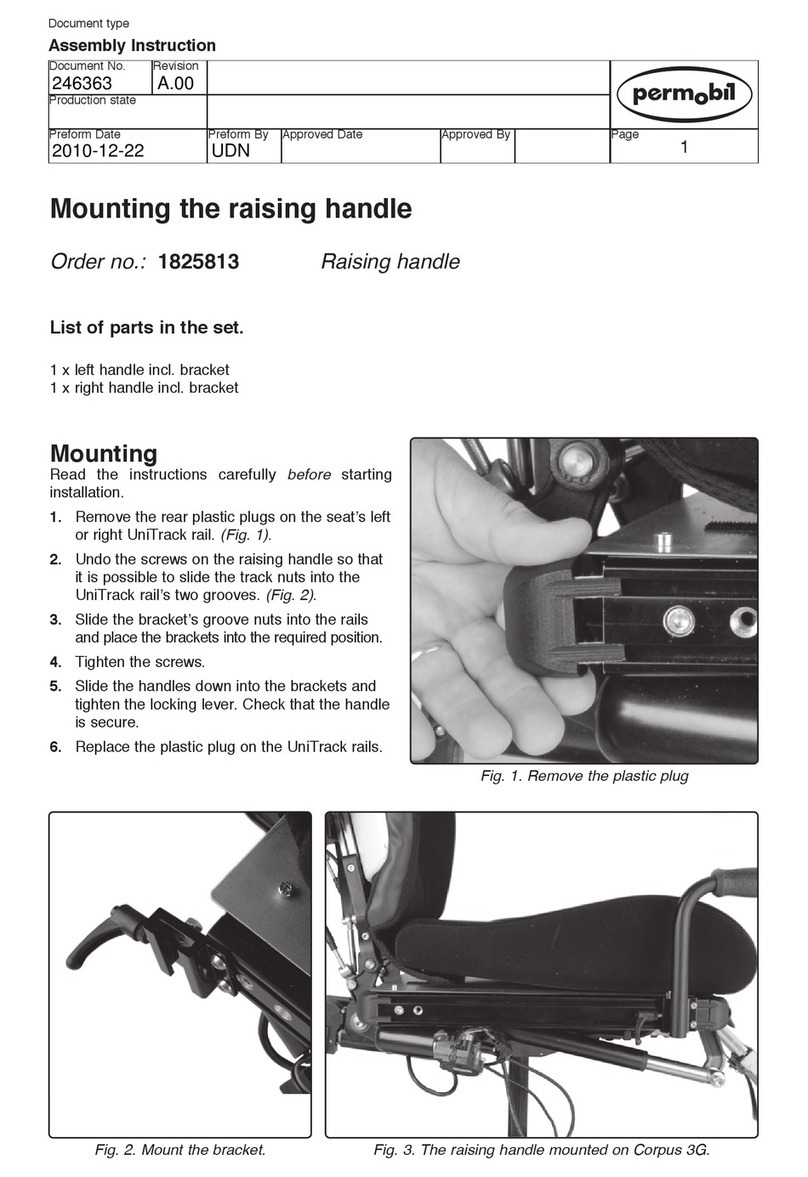
Permobil ZR Owner’s Manual iv OM0005-ENGLISH_Rev E_ZR
CHAPTER 5: ARMRESTS .................................................................................................... 5-1
SWING AWAY ARMREST ............................................................................................................ 5-1
Adjusting the Angle............................................................................................................ 5-1
Adjusting the Height........................................................................................................... 5-2
DESK ARM WITH RIGID SIDE GUARD AND DESK ARM WITH RIGID SIDE GUARD
AND TRANSFER LOOP................................................................................................................ 5-2
Adjusting the Armrest Height ............................................................................................. 5-2
Removing........................................................................................................................... 5-2
Replacing ........................................................................................................................... 5-2
SWING AWAY FLIP-BACK ARMREST......................................................................................... 5-3
Adjusting the Armrest Height ............................................................................................. 5-4
Adjusting the Armrest Angle .............................................................................................. 5-4
CHAPTER 6: SIDE GUARDS ............................................................................................. 6-1
RIGID REMOVABLE AND QUAD REMOVABLE SIDE GUARDS
(ALUMINUM AND CARBON FIBER)............................................................................................. 6-1
Using Rigid Side Guards.................................................................................................... 6-1
Adjusting ............................................................................................................................ 6-1
Removing........................................................................................................................... 6-2
Reinstalling ........................................................................................................................ 6-2
FOLD-DOWN RIGID SIDE GUARDS (ALUMINUM AND CARBON FIBER)................................. 6-2
Using Fold-Down Side Guards .......................................................................................... 6-2
Removing........................................................................................................................... 6-2
Reinstalling ........................................................................................................................ 6-3
FENDERED CARBON FIBER SIDE GUARD................................................................................ 6-3
Using Fendered Side Guards ............................................................................................ 6-3
ADJUSTABLE FENDERED SIDE GUARD (ALUMINUM)............................................................. 6-3
Mounting ............................................................................................................................ 6-3
Adjusting ............................................................................................................................ 6-5
CHAPTER 7: BACK UPHOLSTERY, SEAT UPHOLSTERY
AND SEAT CUSHIONS .......................................................................................................... 7-1
VELCRO®-STYLE ADJUSTABLE BACK UPHOLSTERY ............................................................. 7-1
Adjusting the Tension ........................................................................................................ 7-1
Replacing ........................................................................................................................... 7-1
TENSION ADJUSTABLE BY STRAPS BACK UPHOLSTERY ..................................................... 7-2
Adjusting the Tension ........................................................................................................ 7-2
Replacing ........................................................................................................................... 7-3
TENSION ADJUSTABLE BY STRAPS SEAT SLING UPHOLSTERY.......................................... 7-3
Adjusting the Tension ........................................................................................................ 7-3
Replacing the Upholstery................................................................................................... 7-4
BOLT-ON SEAT SLING................................................................................................................. 7-4
Adjusting the Tension ........................................................................................................ 7-4
Replacing the Upholstery................................................................................................... 7-5
SEAT CUSHIONS ......................................................................................................................... 7-5
VELCRO®-STYLE ADJUSTABLE SEAT BELT ............................................................................. 7-6
Installation.......................................................................................................................... 7-6
Adjustment ......................................................................................................................... 7-7
Safety Check...................................................................................................................... 7-7
Maintenance ...................................................................................................................... 7-7






































